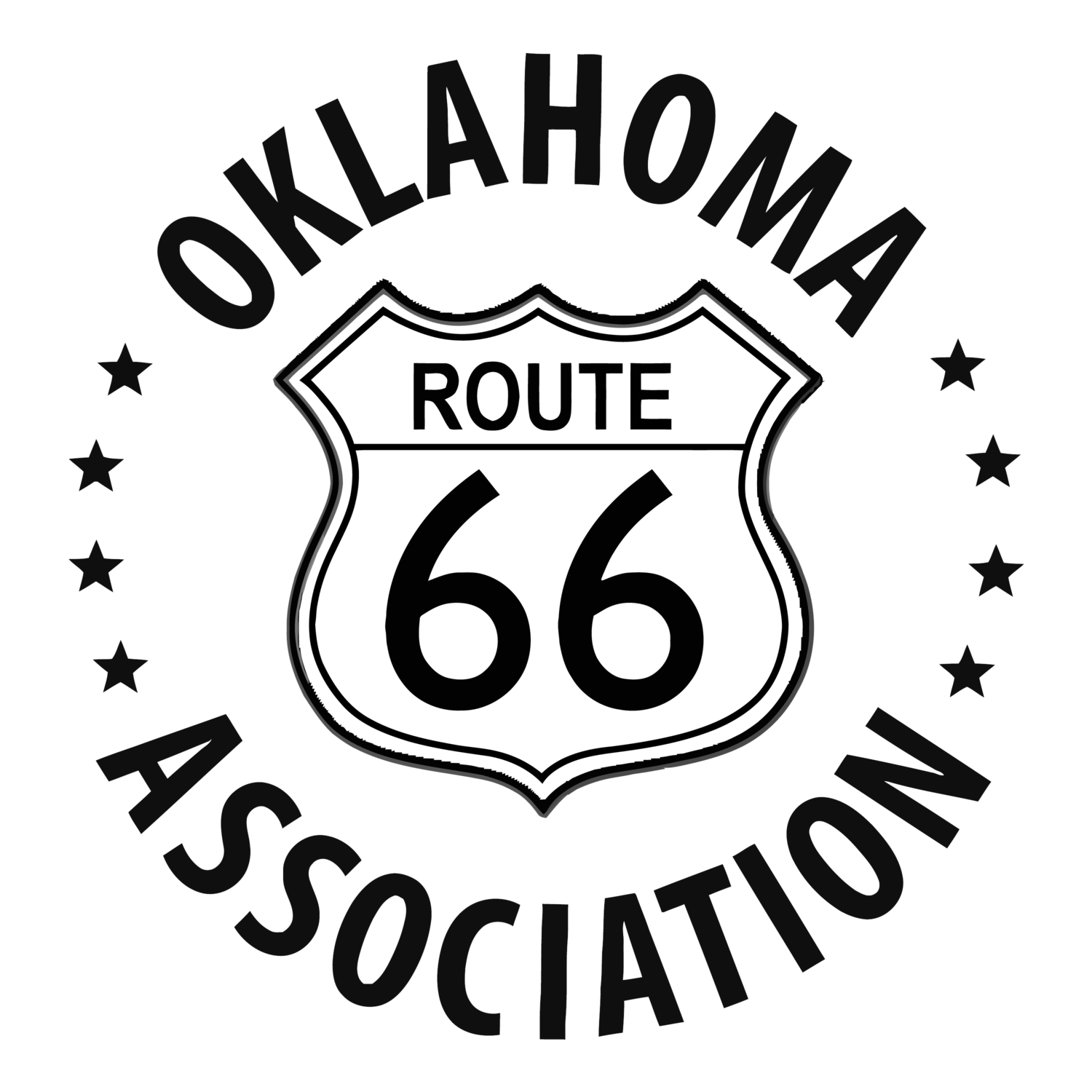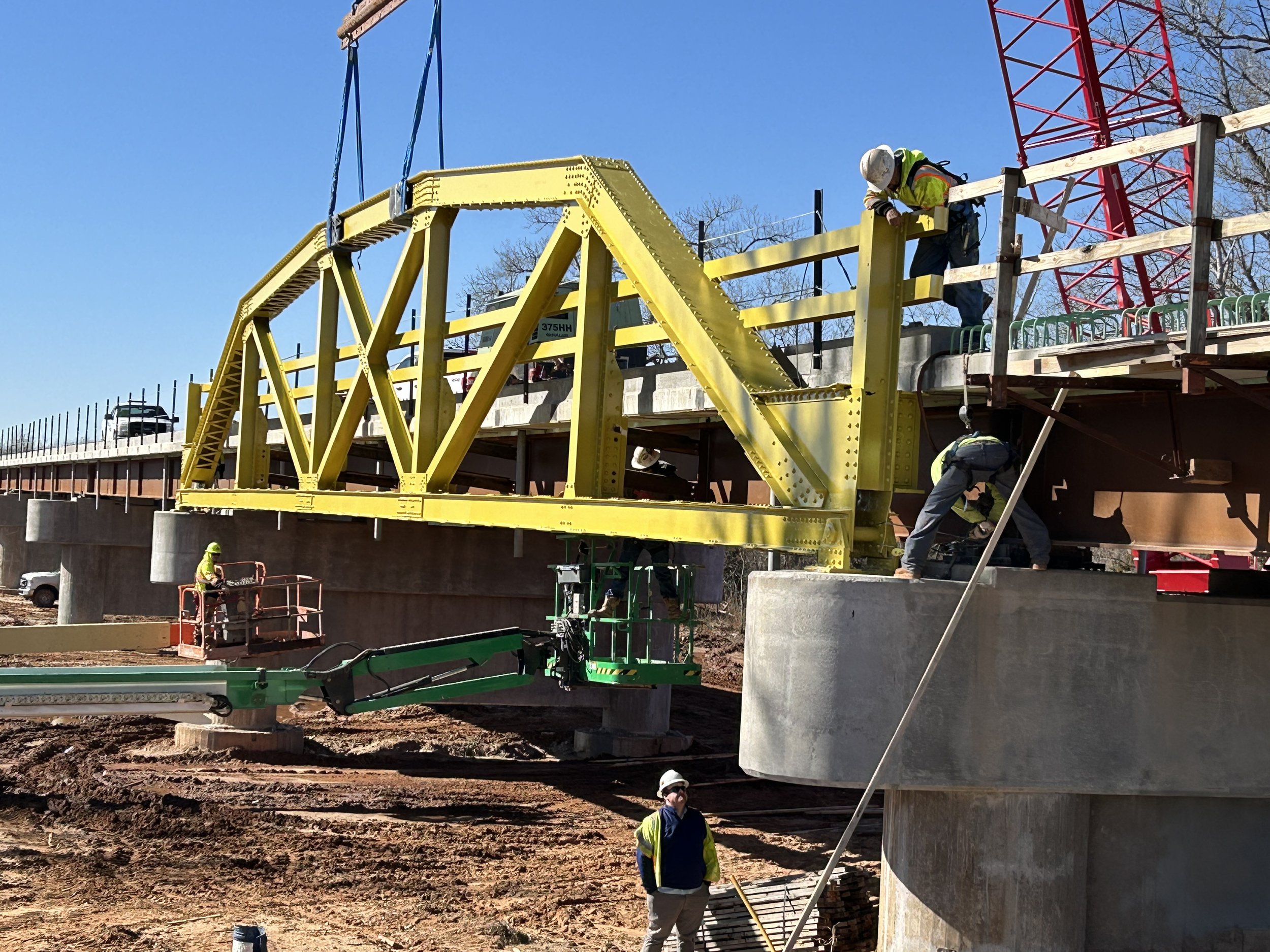Distinctive Bridgeport Bridge Truss Re-installation Begins
by Richard Stephens, Jr.
The first refurbished pony truss sits on the pier caps of Bridgeport Bridge at Span 36, on Jan 11, 2024. Seventy-five more will be put on.
The first and second of Bridgeport Bridge’s refurbished 90-year-old camelback pony tresses were reattached on January 11, marking another milestone towards opening the bridge to traffic. Zackary Holt, Oklahoma Department of Transportation on-site Project Engineer, said reopening will likely occur in April.
The major items remaining: reattaching 76 (now 74) original truss panels, installing traffic rails, and adding approach slabs to the bridge along with a visitor parking area on the northwest corner of the bridge. Work began 14-and-a-half-months ago, on Oct. 31, 2022.
“They’ve [JK Industries, Edmond] finished the rehab of the trusses last week and…the next step is to get those reinstalled. And then as they’re [Oklahoma Bridge Company] doing that, they’ll install the new traffic rail along the bridge, on both sides,” said Holt.
Bad weather and equipment problems prevented reinstalling tresses on January 8-10. However, January 11 was warmer with a clear sky. Stuart Morgan, a project manager with the Oklahoma Bridge Company (OBC), operated a 150-ton Sany crane that hoisted, then slowly set down, the first truss on the bridge’s pier caps at Span Number 36, next to the Canadian River. Span Number 2 was installed on the north end of the bridge shortly afterwards. Both trusses face east.
A second camelback truss was installed on Bridgeport Bridge on the north end. A crew from OBC made sure it was placed correctly on Span Number 2.
Stewart Morgan, OBC’s site manager, plans to “establish a rhythm” and reattach four trusses a day. That will take about a month to finish unless Oklahoma’s cold winter (often consisting of rain, sleet and snow) or equipment problems cause delays.
JK Industries was contracted to restore the trusses. Jake Barnhart, their President, said, “The refurbishment process took nearly 14 months. We literally just finished the last containment last week.” Barnhart added, “We blast clean and abate all the old coating off of the trusses.”
When asked for detail on the restoration process, Barnhart continued. “We remove all of the rust pitting and deal with all the deteriorated steel and get it all back to a near white.” Once they are clean, 15 full-time workers add three coats of protectant. All of this work takes place at a field one-half mile from the bridge. “It starts with a zinc. The second phase is an epoxy, and the third phase is a urethane,” which is ultraviolet stable. For the last phase, liquid urethane is mixed with an off-yellow color close to the same yellow that was on the bridge in 1933 to provide the finished look.
Josh Shalto, left, listens as Zackary Holt, ODOT Bridgeport Bridge site manager, explains how exactly trusses must fit.
Barnhart was impressed with how well the 90-year-old trusses were made and their condition. He added, “The grade of steel is fantastic, all the rivet work, the lattice work, you know, given their age was in fantastic condition. There was very little, what we would call section loss or structural fatigue…”
A contract worth $35,705,909 was issued to OBC to rehabilitate the Bridge, which is on US-281 (Route 66) and straddles Caddo and Canadian counties.
The Oklahoma Route 66 Association and Oklahoma Department of Transportation were significant voices in overhauling the bridge – not destroying or building another – by adding a new surface and reattaching the original camelback pony trusses to the new structure. Although they are no longer load-bearing, they emulate the driving experience Route 66 fans have enjoyed for decades.
Thus far, major completed work includes removing the bridge deck and its’ steel joist, shortening the top five feet of each column to install a concrete pier cap, and reinstalling a new bridge deck with precast deck panels.
“It’s a good feeling to take an old structure and bring it, bring it up to code, and make it something a viable portion of the infrastructure that communities out west of OKC are gonna enjoy for many more decades”, said Barnhart.
The crew of Oklahoma Bridge Company adjust the end of the first truss to be installed on Bridgeport Bridge, Jan 11, 2024.




